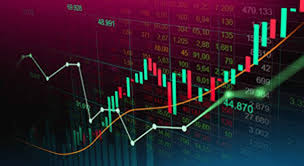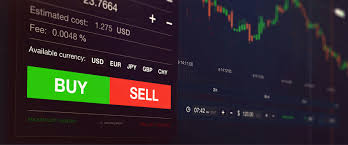
What is Forex Trading?
Forex trading, short for foreign exchange trading, refers to the process of buying and selling currencies in the global marketplace. It’s one of the largest financial markets in the world, with an average daily trading volume exceeding $6 trillion. Unlike stock trading, Forex transactions involve currency pairs, meaning that when a trader buys a currency, they are simultaneously selling another. The objective is to profit from fluctuations in currency values. To navigate this dynamic market effectively, understanding its fundamentals is crucial. For traders looking for the best tools, consulting a list of forex trading definition Best Platforms for Trading can provide valuable insights.
The Mechanics of Forex Trading
Forex trading operates through a network of banks, brokers, and financial institutions, all working together in a decentralized environment. The market is open 24 hours a day, five days a week, providing ample opportunity for trading across different time zones. Currencies are traded in pairs, denoting how much of the second currency is required to purchase one unit of the first currency (e.g., EUR/USD).
Each currency pair comes with a bid and an ask price. The bid price is what the market will pay for a currency pair, while the ask price is the amount at which the seller is willing to sell. The difference between these two prices is known as the spread, which represents the broker’s profit from the trade. Successful Forex trading requires precise timing and knowledge of economic indicators, political events, and market sentiment.
Key Terminology in Forex Trading

To understand Forex trading, one must become familiar with several key terms:
- Pips: The smallest price move that a given exchange rate can make. It’s typically the fourth decimal place in currency pairs.
- Leverage: Using borrowed capital to increase the potential return of an investment. While it can magnify gains, it also increases risks.
- Margin: The amount of capital required in your account to open a leveraged position.
- Lot: A standard unit measurement used in Forex. The most common size is a standard lot, which equals 100,000 units of the base currency.
- Order types: Including market orders, limit orders, and stop-loss orders, which help manage trades effectively.
Factors Influencing Forex Markets
Several factors influence the Forex market, including:
- Economic indicators: Reports such as GDP, employment figures, and inflation rates provide insight into a country’s economic performance.
- Interest rates: Central banks control monetary policy, and changes in interest rates can lead to shifts in currency values.
- Political stability: Countries with less risk for political turmoil tend to attract more foreign capital.
- Market sentiment: The overall attitude of traders, which can influence currency price movements.
Forex Trading Strategies
A successful trading strategy can be defined as a plan that consists of specific guidelines for entering and exiting trades. Some commonly used strategies include:
- Scalping: A strategy that focuses on making small profits over very short trades.
- Day trading: Involves buying and selling currencies on the same day to capitalize on short-term market movements.
- Swing trading: A method that involves holding positions for several days to benefit from expected upward or downward market shifts.
- Position trading: Long-term trading strategy based on fundamental analysis of economic trends and events.

Choosing a Forex Broker
Selecting a broker is a pivotal step for any Forex trader. Not all brokers are created equal. Important factors to consider include:
- Regulation: Opt for brokers regulated by reputable authorities to ensure your funds are secure.
- Trading platforms: Look for user-friendly platforms with advanced tools and features.
- Customer service: A responsive customer service team can significantly improve your trading experience.
- Fees and spreads: Pay attention to the costs associated with trading to identify the most cost-effective option.
The Risks of Forex Trading
Though Forex trading can be highly profitable, it does come with substantial risks, including:
- Leverage risk: While leverage can enhance profits, it can also lead to significant losses, amplifying the potential for risk.
- Market risk: Unexpected events can lead to increased volatility and potentially significant losses.
- Counterparty risk: This arises when the broker fails to fulfill their part of the transaction.
- Psychological risk: Emotional factors such as fear and greed can impact decision-making.
Conclusion
Forex trading presents a wealth of opportunities for traders willing to dedicate the time to understand its complexities. By grasping the fundamental aspects and developing sound strategies, traders can navigate this dynamic market effectively. As the marketplace continues to evolve, staying informed and utilizing robust platforms will remain crucial for success in Forex trading.